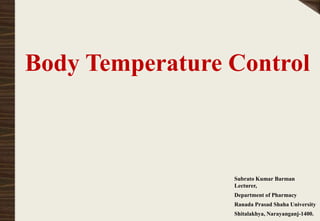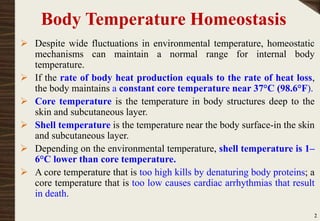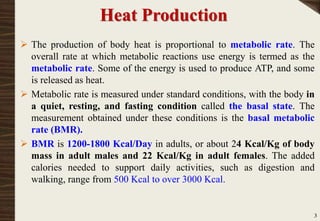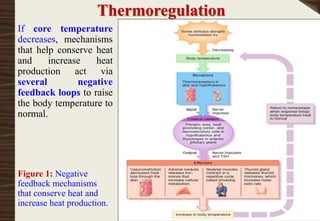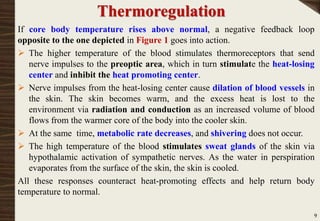The document discusses body temperature control and homeostasis. It explains that the hypothalamus acts as the body's thermostat to maintain a constant core temperature near 98.6°F through heat production and heat loss mechanisms. When core temperature increases, the hypothalamus triggers heat loss through sweating and increased blood flow to the skin. When core temperature decreases, it triggers shivering and constricted blood vessels to conserve heat. Factors like exercise, food, and hormones can influence heat production and metabolic rate. A high core temperature kills by denaturing proteins, while a low core temperature causes cardiac issues.
